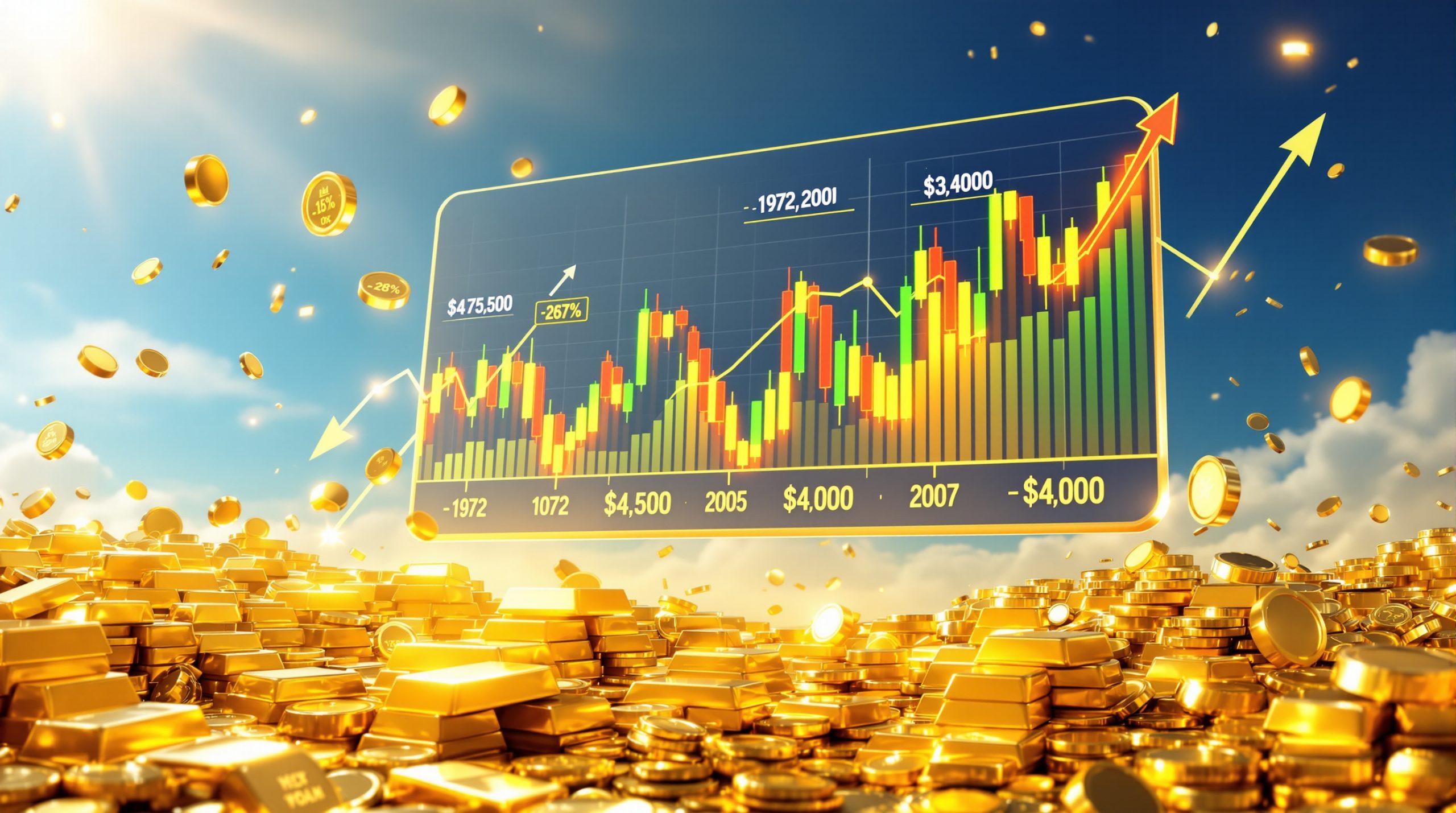ASX Market Performance Amid Commodity Pressure: Analysis and Implications
The S&P/ASX 200 gained 48.6 points (0.61%) to 7,973.8 points as of 10:30am AEDT on Wednesday, continuing its recovery despite ongoing pressure in the commodity sector. This modest gain comes amidst a challenging period for Australian equities, with the index down 1.09% over the past year and Q1 2025 recording its worst performance since the COVID-19 pandemic in 2020.
Six of eleven sectors moved higher during Wednesday's session, but materials and energy notably started in negative territory, highlighting the divergence between broader market sentiment and commodity-linked stocks. The S&P/ASX 200, which represents Australia's top 200 companies by float-adjusted market capitalization, accounts for approximately 80% of Australia's equity market value and remains the benchmark for institutional investors.
Market breadth has improved in recent sessions despite persistent headwinds, suggesting institutional buying in selective sectors while commodities continue to face challenges from global trade uncertainty.
What's Causing Market Volatility?
The primary driver of current market turbulence is the imminent implementation of new US tariffs set to take effect at 7am AEDT on Thursday (3 April 2025). These wide-ranging protectionist measures have prompted Europe and Canada to announce retaliatory tariffs, raising concerns about a potential global trade war escalation that could severely impact commodity demand.
"The market is pricing in significant disruption to global trade flows, with particular concern for commodities that form the backbone of Australia's export economy," explains Michael Anderson, Chief Economist at Capital Markets Research. "We're seeing classic risk-off behavior as investors reduce exposure to cyclical commodities ahead of potential demand destruction."
The tariff standoff has created pronounced turbulence in global equities markets, applying particularly strong downward pressure on commodity markets that rely heavily on unfettered global trade. This has resulted in capital rotation, with investors increasingly shifting toward safe-haven assets over riskier investments like junior mining investments: navigating risks and rewards.
Commodity analysts at Goldman Sachs estimate that full implementation of the proposed US tariffs could reduce global commodity demand by 2-3% annually, with particularly severe impacts on industrial metals and energy exports.
How Are Commodities Responding?
The ANZ China Commodity Index declined 0.1% in the latest reading, with precious metals, industrial metals, and energy sectors all retreating in tandem. This synchronized decline across commodity classes highlights investor concerns about both industrial demand and risk appetite.
Contrary to the general downtrend, bulk commodities have shown surprising resilience, advancing 0.2% despite the broader sell-off. This outperformance relates to China's recent infrastructure stimulus measures and limited immediate substitution options for Australian iron ore and coal in Asian supply chains.
Gold miners, traditionally considered defensive during market uncertainty, have paradoxically experienced early trading declines despite gold's status as a safe-haven asset. West African Resources (ASX:WAF) fell 1.5% to $2.31, while Spartan Resources (ASX:SPR) dropped 1.31% to $1.88, highlighting the indiscriminate nature of the current selling pressure.
"The disconnect between physical gold prices and gold equities is a technical anomaly rather than a fundamental shift," notes Sarah Jenkins, Head of Commodities Strategy at Australian Bullion Advisory. "Fund liquidations and margin calls are forcing some investors to sell their most liquid positions, regardless of the underlying fundamentals."
The copper market remains particularly vulnerable to trade disruptions, with prices retreating 3.2% since the tariff announcements. This has placed additional pressure on mid-tier producers like Sandfire Resources (ASX:SFR) and 29Metals (ASX:29M), which lack the scale advantages of diversified majors.
Interest Rate Environment and Market Outlook
The Reserve Bank of Australia maintained current interest rates in its latest decision, continuing the holding pattern established in Q4 2024. This stability in monetary policy contrasts sharply with the volatility evident in equity and commodity markets.
ANZ Economist Adelaide Timbrell notes that while there is "no additional RBA easing in forecasts," the market weakness stemming from policy uncertainty "raises risk of more easing than expected" if trade tensions materially impact Australia's economic growth trajectory.
The first quarter of 2025 has proven to be the worst for the ASX since the COVID pandemic in 2020, with cumulative losses approaching double digits at one point before the recent recovery. This performance diverges significantly from the RBA's more optimistic economic projections made in February.
"The transmission mechanism between monetary policy and commodity markets is currently being overshadowed by geopolitical factors," explains Dr. James Morrison, Professor of Economics at Monash University. "The RBA's challenge is determining whether the commodity pressure is transitory or structural, which will dictate their policy response in coming months."
The yield curve inversion in Australian government bonds has deepened to levels not seen since 2019, suggesting fixed-income investors are betting on eventual rate cuts despite the RBA's current hawkish stance.
Global Trade Tensions and Market Response
The implementation of wide-ranging tariffs by the US President has created significant market anxiety, with analysts describing the measures as potentially the most disruptive to global trade since the 1930s Smoot-Hawley tariffs. The ASX has experienced significant losses due to these trade war fears, with billions wiped from market value in recent weeks.
Resource companies are particularly vulnerable due to their reliance on global supply chains and end markets. Industry experts estimate that approximately 60% of Australia's mining output is eventually consumed in markets potentially affected by the escalating tariff dispute.
"We're seeing the market grapple with second and third-order effects of tariffs," observes Eleanor Chang, Chief Investment Strategist at Pacific Capital. "It's not just about the direct impact on Australian exports, but how retaliatory measures could reshape global trade flows and commodity demand patterns over the medium term."
Port congestion at key commodity terminals has increased as buyers rush to secure shipments ahead of tariff implementation deadlines, creating logistical bottlenecks that could persist for months. This short-term demand surge masks underlying concerns about future export volumes once tariffs take effect.
Trump's policies and their impact on global commodity markets is expected to continue as the tariff situation develops, with particular focus on whether exemptions or modifications will be granted for strategic materials and allies.
What Does This Mean for Mining Investors?
The current market environment presents both challenges and opportunities for mining investors. Gold has reached new Australian dollar records amid the heightened volatility, reinforcing its status as the premier safe-haven asset despite recent pressure on gold equities.
"The dislocation between physical gold prices and producer valuations represents a potential opportunity for contrarian investors," suggests David Wilson, Head of Mining Research at Macquarie Bank. "Companies with strong balance sheets, low operational costs, and minimal debt should weather the current uncertainty and potentially outperform when sentiment normalizes."
Resource sector stocks face continued pressure despite overall market gains in other sectors, as investors reassess medium-term demand projections for key commodities. Mining companies with significant export exposure to markets affected by tariffs are particularly vulnerable.
Potential opportunities exist in bulk commodities that have shown relative strength amid the broader commodity weakness. Companies with significant iron ore and metallurgical coal operations have outperformed their base metal peers, reflecting the resilience of steel-making material demand in key Asian markets.
Mining executives are increasingly adopting hedging strategies to lock in current prices and mitigate downside risks, with forward sales of copper and zinc reaching their highest levels since 2018 according to LME data. Moreover, understanding gold market analysis and investment insights becomes crucial for investors in these uncertain times.
FAQ: ASX and Commodity Markets
What is the S&P/ASX 200 index?
The S&P/ASX 200 is Australia's leading share market index containing the top 200 ASX-listed companies ranked by float-adjusted market capitalization. It is recognized as the institutional investable benchmark in Australia and designed to measure the performance of the largest index-eligible stocks listed on the ASX.
The index captures approximately 80% of Australia's total market capitalization and employs a float-adjustment methodology that excludes closely-held shares and government holdings to better reflect tradable market value.
How might US tariffs affect Australian mining companies?
The implementation of US tariffs could create potential disruption to global supply chains, particularly for commodities dependent on manufacturing output. Australian mining companies face several challenges:
Reduced demand for Australian resources in directly affected markets, with base metals and energy exports likely experiencing the greatest impact.
Increased price volatility across commodity sectors as markets adjust to the new trade landscape.
Strategic repositioning by major mining companies, potentially including production curtailments, capital expenditure reductions, and market diversification efforts.
Mid-tier producers with concentrated export markets may be more vulnerable than diversified majors with operations across multiple jurisdictions and commodities. This is particularly evident in BHP's strategic response to global trade challenges.
What factors could reverse the current commodity pressure?
Several catalysts could potentially improve the outlook for commodities and related equities:
Resolution or clarity on US tariff implementation, particularly if exemptions are granted for strategic materials or allied nations.
Positive economic data from major markets, especially China's manufacturing and construction sectors which drive demand for Australia's key commodity exports.
RBA policy adjustments in response to deteriorating market conditions, with potential rate cuts supporting equity valuations through lower discount rates.
Stabilization of global trade relationships through diplomatic negotiations, potentially including multilateral agreements that preserve critical supply chains.
Supply discipline from major producers, with voluntary production cuts helping to rebalance markets and support prices, particularly in base metals where inventories have increased significantly.
Navigating the geopolitical shift in commodity markets has become increasingly important for investors as the ASX outlook for 2025 continues to face significant challenges and uncertainties.
Looking to Stay Ahead of the Next Market-Moving ASX Discovery?
Don't let market volatility catch you off guard – discover significant ASX mineral announcements before the broader market with Discovery Alert's proprietary Discovery IQ model, delivering instant notifications on high-potential opportunities despite commodity sector pressure. Visit Discovery Alert's discoveries page to see how major mineral announcements have historically generated substantial returns for early investors.




